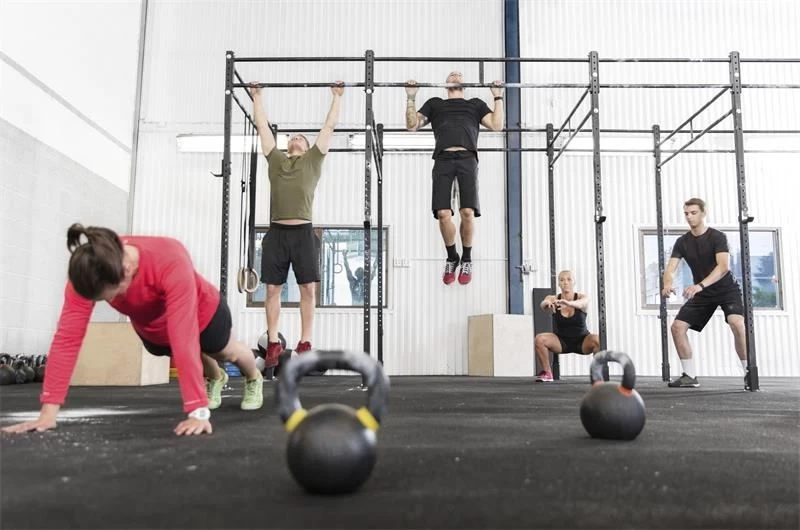Cardio exercise is one of what I would call the three main tenets of training, alongside resistance and mobility. Without any of these, your body will naturally atrophy, decreasing in efficiency.
Like resistance and mobility training, cardio offers a range of benefits and should be built into your every week. Briefly, here's how it helps:
Wards off disease. Cardio helps to keep your heart, lungs and blood circulation in good working order. Consequently, it lowers your risk of suffering from a number of scary sounding health conditions, including coronary heart disease, diabetes, and Alzheimers.
Burns through blubber. Cardio training sees your body burn calories for energy, which can help you create a calorie deficit – the bottom line to losing weight. If you burn more than you eat, you shed pounds. Clearly there are other factors, but it is important to remember that cardio is one of your most potent weapons if you want to lose weight.
Improves all round fitness. By increasing the efficiency of your body at performing strenuous activity, cardio works to improve your entire aerobic system. This means that the more moderate to intense cardio exercise you perform, the fitter you will be.
High Intensity vs Low Intensity
One of the big debates in fitness is whether to perform cardio at a high or low intensity. There are benefits to both and in my opinion, given an adequate amount of time, a well rounded training program will include both.
Higher intensity will be better at improving your overall fitness and performance. It will also help you burn a lot of calories during and following exercise, as you’ll benefit from the thermic effect of exercise – essentially, your metabolism stays high long after you've stopped working out.
Lower intensity cardio at a moderate heart rate of between 105-120 beats per minute will allow you to burn a higher percentage of calories from fat, rather than carbohydrate. This is known as the 'fat-burning' zone and is the midlifer's friend, because it attacks the middle age spread without putting your joints under great strain. Low intensity cardio will also keep your heart healthy. Because of its lower intensity, it's a useful tool during periods of accumulated fatigue.
1. Best low intensity: walking
Walking has perhaps the lowest barrier to entry of all the exercises available to us. All it takes is that we head out of the door and walk around the block. Simple!
It’s important not to underestimate the power of walking. It is a great mood booster and helps to reduce levels of stress and anxiety.
From a fat loss perspective, walking within the fat loss zone of 105-120 BPM will massively help your cause. In fact its one of the first things I have new clients do when they first start working with me.
I recommend 20-90 minutes per session, depending on your schedule.
2. Best high intensity: intervals
Interval training, which is essentially high intensity training, is the most versatile form of high intensity training. Intervals will vary depending on the particular protocol you are fond of. I recommend the Tabata protocol, which is 20 seconds of maximal exertion, followed by 10 seconds of rest, eight times over.
The Tabata protocol lends itself to a number of different exercises that can be performed at your own pace, including many that need no fitness equipment at all. Doing Tabata at home is easy.
Exercises include: Bodyweight Squats, Lunges, Press up, Jumping jacks, shadow boxing, step ups
3. Most calories per hour: sprinting
Sprinting is estimated to burn 500 calories in a 30 minute session, making it a very efficient form of training.
Obviously you won’t be sprinting for 30 minutes. Your sprints should last 30 seconds or less, and there should be adequate recovery between sprints.
Personally I find sprinting (on a track or a hill) one of the most effective forms of training with which to assist with fat loss – but it's really important you condition your body first before doing it, as otherwise you run a high risk of injury.
4. Most additional benefits: weight lifting
Yes, you read right. Intense weight lifting with short rest periods and moderate weights will give you many of the same benefits of traditional cardio exercise, but can also help to strengthen your muscles, stabalise your joints, and ward off skeletal problems such as osteoporosis.
There are a lot of protocols out there around weight lifting. The one I would start with is escalated density training, which involves squeezing the most amount of volume of exercise into a given training period.
For example:
Set a timer for six minutes and perform 6 reps of each exercise, back to back until the timer sounds.
5. Best for social: dancing
Moderate intensity dance workouts will burn approximately 450 calories – not bad, given that dancing also helps enhance mobility and bodily awareness, which is important for offsetting diseases of cognition in later life.
The other great benefit is the social element. Whether you consider yourself a good dancer or not, attending classes (or something less formal) will bring with it numerous opportunities to meet people and be merry. What's not to like?




